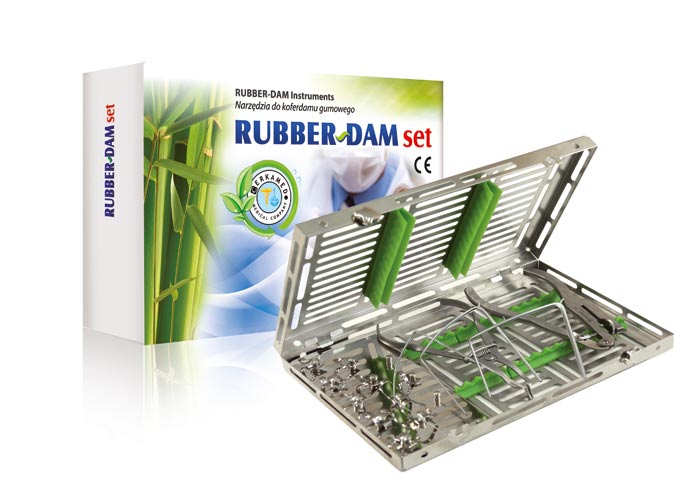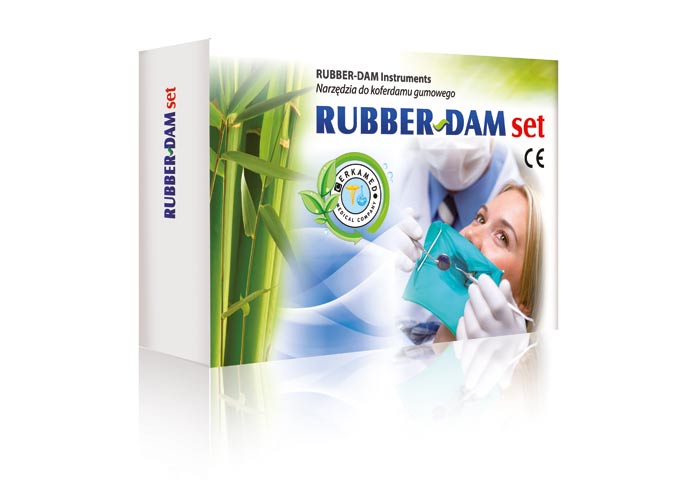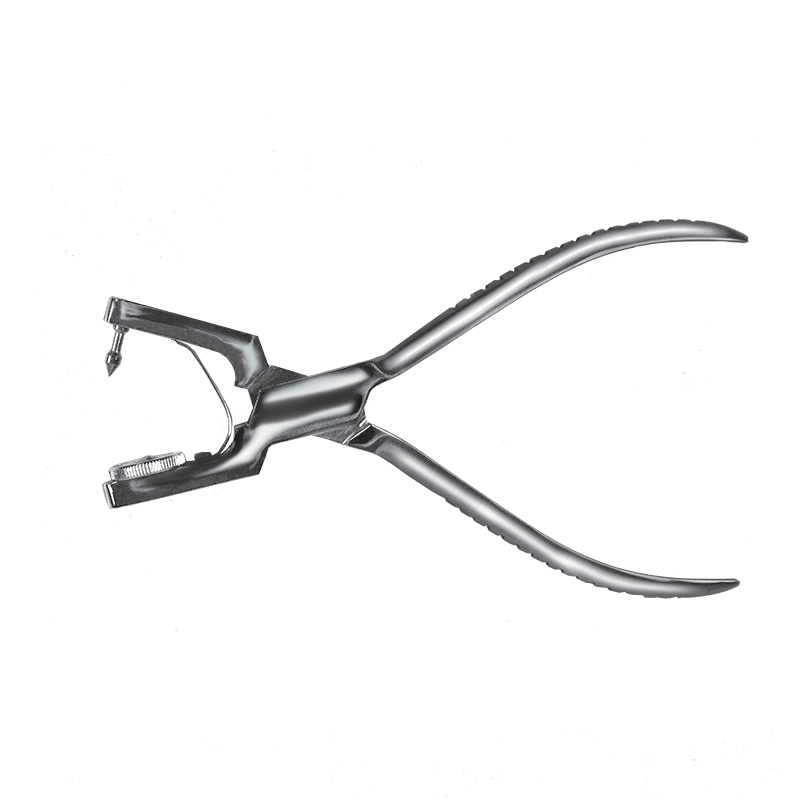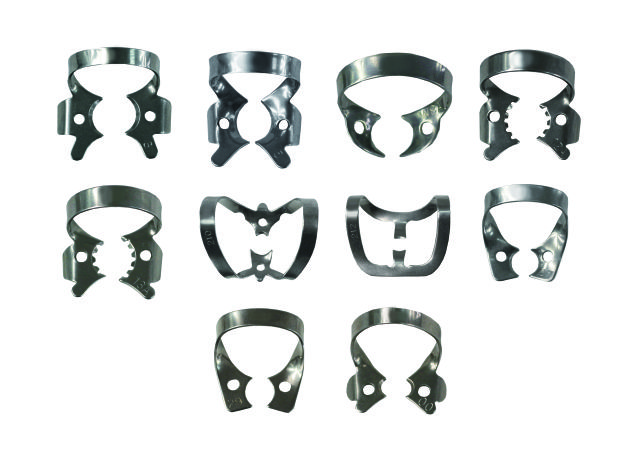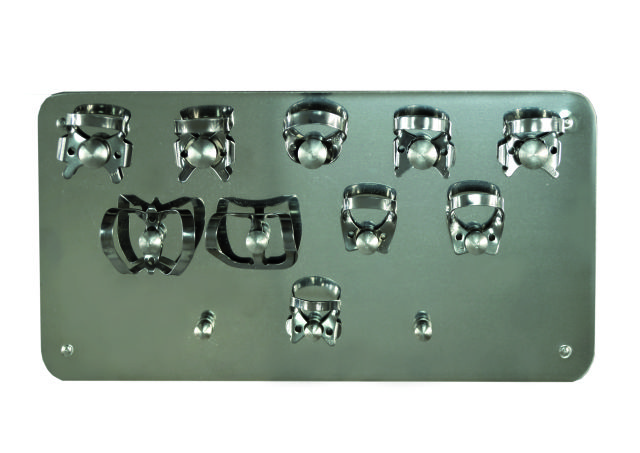Description
Properties of RUBBER-DAM SET
Every tool from RUBBER-DAM SET is also available separately:
- Rubber dam punch with the function of adjusting the hole diameter
- Rubber dam forceps for clamps placement with the opening degree resistance
- Profiled rubber dam frames available in 3 sizes:
- L – 14 × 14,5 cm
- M – 11×11 cm
- S – 9×9 cm
- The set of high elasticity clamps winged and wingless with excellent shape memory, which help to stabilize rubber dam on the tooth (also available in satin version).
• Flat jaws for small lower molars (No 3).
• Festooned wings for large upper molars. Wings fit the gum curvature (No 5).
• Festooned jaws for molar’s roots (No W8A).
• Serrated jaws for lower right and upper left molars (No12A).
• Serrated jaws for lower left and upper right molars (No 13A).
• Small and large jaw for anteriors (No 210).
• Flat jaws for anteriors (No 212).
• Rounded jaws for premolars (No 27).
• Rounded and at jaws for premolars (No 29).
• Small jaws and high bow for anteriors and premolars (No 00)
CLAMS AVAILABLE SEPARATELY
• Wings, flat and large jaws for premolars (No 2A).
• Festooned wings, flat jaws for large premolars (No 208).
- Base for clamps
RUBBER-DAM SET instruction for use
1) In case of root canal treatment only the tooth being treated should be isolated. During treatment of cavities isolating the operating field should be ensured. During posterior teeth treatment, for example, the tooth situated behind the one being treated should be isolated (if it is possible) and the isolation should continue to the opposite middle incisor. All the anteriors need to be isolated while treating, say from premolar to premolar to have the access and to allow the comparison with the opposite side whatis important during cosmetic procedures. In pedodontics, the teeth which are treated should be isolated. Usually it concerns two or three teeth.
2) To select particular points on RUBBER-DAM, in which the hole should be made, the RUBBER-DAM template might be used (pic.1). Place Rubber-Dam on top of the template, select a particular tooth to be isolated (pic.2, pic.3).
To make a perfect hole in the Rubber-Dam punch the hole then lift the dam over the pin (pic.4).
3) Place and stretch RUBBER-DAM sheet on to a metal frame (pic.5).
4) Adjust the clamp to the tooth using forceps. In case of working with clamps without wings squeeze the clamp through the bottom of the hole and position it around the tooth using forceps. When working with clamps with wings the RUBBER-DAM is stretched on wings, then all is positioned on the tooth by using forceps. After the rubber-dam is positioned, push the RUBBER-DAM off the wings. Clamp should be always located on the last exposed tooth. The clamp’s bow must be always placed toward patient’s throat (pic.6).
5) To stabilize RUBBER-DAM place RUBBER-DAM cord in the interdental space between the exposed tooth and the one protected with dam (pic.7).
6) If the seal is required RUBBER-DAM liquid might be used (pic.8).

FOR DENTAL USE ONLY
NON-STERILE – STERILIZE DIRECTLY BEFORE USE



